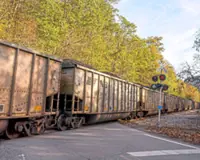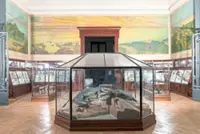The ceiling in the Hall of Names, bearing names and pictures of Holocaust victims, at the Yad Vashem Holocaust memorial museum in Jerusalem. — AFP
HOLOCAUST survivor Josef Cipin is haunted by one big fear.
“I hope that they believe that we didn’t make up the stories,” said the 100-year-old Canadian, who worries what will happen when the last living witnesses of what was done by the Nazi are gone.





